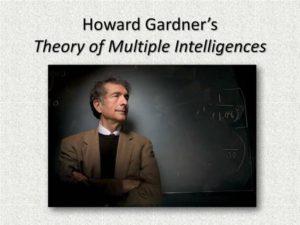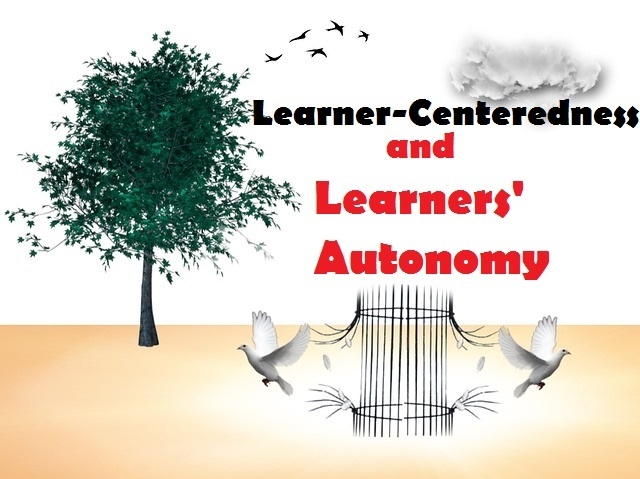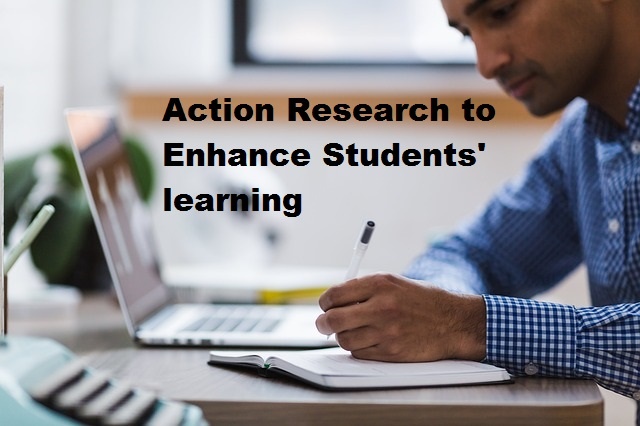Multiple Intelligence Theory
Throughout the history of education, there have been many attempts to define the concept of intelligence and how it could be measured. At that time, most of the scholars believed intelligence to be a unified and single capacity to think, understand, and learn in a logical way. Yet, this perspective has been challenged by the American psychologist: Howard Gardner. He defines intelligence as ‘’the capacity to solve problems or to fashion products that are valued in one or more cultural setting’’ (Gardner & Hatch, 1989). Gardener showed that there are several cognitive capacities, not just a unified one.
Gardner firmly believes that learners show their intelligences in different ways, and recognizing multiple intelligences will ultimately help instructors and teachers know how students perceive and process knowledge – hence knowing how to teach it to them.

What are Multiple intelligences?
Gardner in his book: Frames of mind, has presented eight intelligences that he advocates.
- Verbal- linguistic: the ability to use oral or written language to express thoughts, ideas and attitudes…etc. This kind of intelligence is conveyed through presentations, dialogues, debates, conversations….etc.
- Logical mathematical: the ability to understand things and explain things through using logics, deduction and calculations.
- Visual- spatial: the ability to draw, recognize shapes and make graphs and maps.
- Musical: the ability to recognize different sounds, composing, singing… etc..
- Interpersonal: the ability to understand other people’s motivations, intentions, attitudes…. etc..
- Intrapersonal: the ability to understand one’s self, goals, perceptions and characteristics through reflection and meditation.
- Bodily-kenesthestics: the ability to use the body to perform different tasks, such as : dancing, athletics …etc.
- Naturalistic: the ability to recognize the difference between plants, and appreciate nature, environment… etc.
He says that children are born with different intelligences. Some of them might have two or three. But, their degree of strength varies from one child to another.
Pedagogical implications of Gardner’s Multiple Intelligences theory
Howard’s theoretical assumptions on the concept of intelligence shaped educational practices and educators’ conceptions of teaching and learning in the last few decades. Although Gardner has been criticized for certain considerations in his formulation of the theory, there seems that his ideas are getting a lot of acceptance in educational circles.
Multiple intelligences provided a new approach to fully conceive teaching and learning. the primary objective here is sharing some of its pedagogical implications and classroom applications.
Gardner states that all the eight intelligences are needed to productively function in society. Ergo, instructional practice must be designed in a way that accommodates all the individual differences.
Teachers have to think of all the intelligences as equally as important
Students with linguistic or logical intelligences should not be favored over others. Teachers have to treat them equally and most importantly, help them develop their intelligences.
Multiple intelligences suggest that learners perceive and construct knowledge differently.
This basically informs teaching practices. In other words, lesson planning should be designed in a comprehensive way that caters for learners’ needs and skills. Teachers have to vary in curricular activities and tasks in order to target students’ intelligences.
In addition to this, teachers have to employ different modes of learning such as: individualized, cooperative, group and others. The use of visual diagrams, pictures, songs and interactive games is also of paramount importance.
Assessment should be changed from paper-pencil test to performance-based assessment.
The basic requirement of multiple Intelligences is that while learners might exhibit different learning approaches, teaching and assessment also should vary to help these learners advance in their education.
Traditional assessments measure only the extent to which a goal has been achieved, but they don’t measure the extent to which learners are able to perform certain skills. Besides, traditional assessments usually target only linguistic and mathematical-logical intelligence. So, teachers have to develop ways that can enable them to assess learners’ intelligences objectively.
Among the ways that teachers can draw on to assess learners with different intelligences are: classroom discussions, picture description, graphs and mind-map design, portfolios, interviews, projects-based learning, presentations…etc.
We are sure you have heard of multiple intelligences! How do you use to assess your learners? What practices do you draw on that match this theory? What teaching or learning problems have you ever encountered that relate to this theory? Please, help us know your reactions in comments below. We want to help one another. Please, Like our Facebook page and share this post with others if you think it deserves.
References:
- Gardner, H. (2006). The Development and the Education of the Mind. New York: Routledge.
- Gardner, H. (2004). The Unschooled Mind: How Children Learn and How Schools Should Teach. New York: Basic Books.








This is really effective for me. I am totally valuable this. How actually valuable this is for me!